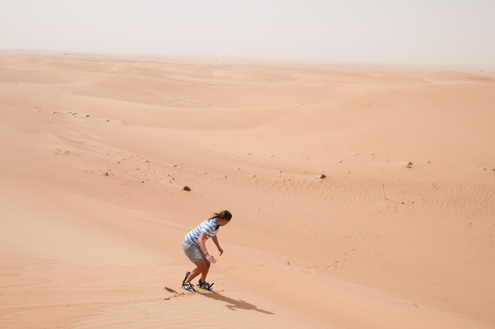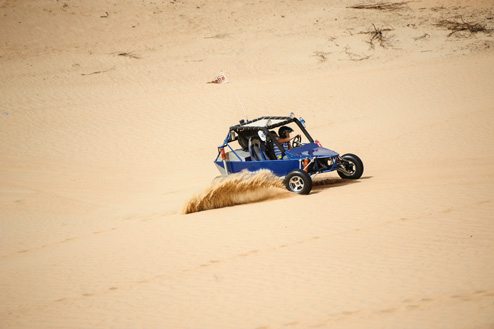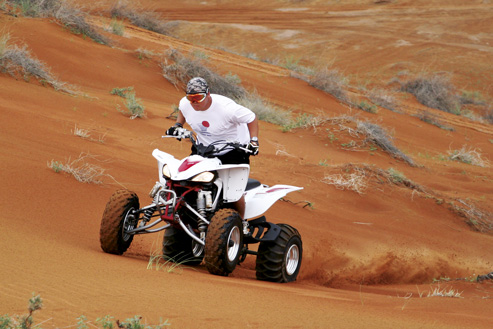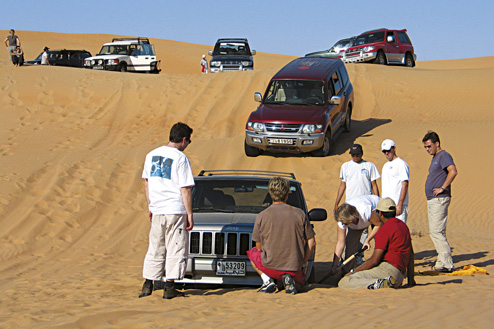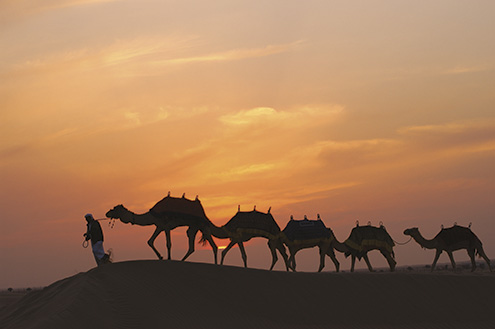The Basics
Riding in desert sand is a lot different to riding on a conventional track, and it will take a while before you can ‘read’ the desert and become familiar with the reaction of your equipment or vehicle in various sand types. Your first experience of riding in the sand is a little scary as the sand grabs the tyres, which can feel very unstable, especially at low speeds. If you do come to a stop, be careful when pulling away as you could bog down, especially in soft sand.
Not all sand will give the same ride, but you will learn to know the difference between hard sand and soft, powdery sand, which is sometimes hard to spot and can be quite dangerous if you are not expecting it. You’ll be able to identify hard-packed sand by ridges or grooves on either side of the dunes. Another clue to the texture of the sand is the colour: ‘the light, the looser’.
One of the most important rules to remember when riding in the desert is never to ride hell-for-leather over a dune without knowing what is on the other side. There may be something unexpected, like a sudden drop, a quarry or a happy family enjoying a nice Friday picnic, and by the time you’ve shot over the top of the dune, there’s little you can do about it.
If you don’t like hospital food, dunes should always be approached by going up at an angle, so that you can check what lies ahead and choose your descent based on any obstacles in your path.
Latest News
View More-
QR code update in UAE & Oman Off-Road Guides
We have implemented some updates, so please now use the following links to navigate to the starting points of all rou...
-
UAE-Oman border closures
The closure to non-GCC nationals of the UAE/Oman border posts at Madam and Masfout, near Hatta, means expats and tour...
-
Our new UAE Off-Road guide is your route to adventure
Timed to perfection for the cooler weather, Explorer’s latest UAE Off-Road guide is back on the shelves, but bi...
-
City-chic Mango Bikes are custom-made for urban cycling
The colourful single-speed Mango Bike is the model of choice for cyclists keen to commute to the office or coast arou...
-
Environmental tips for the great outdoors
We’re excitedly putting the finishing touches to our brand new UAE and Oman Off-road Explorer guides, ready ...

